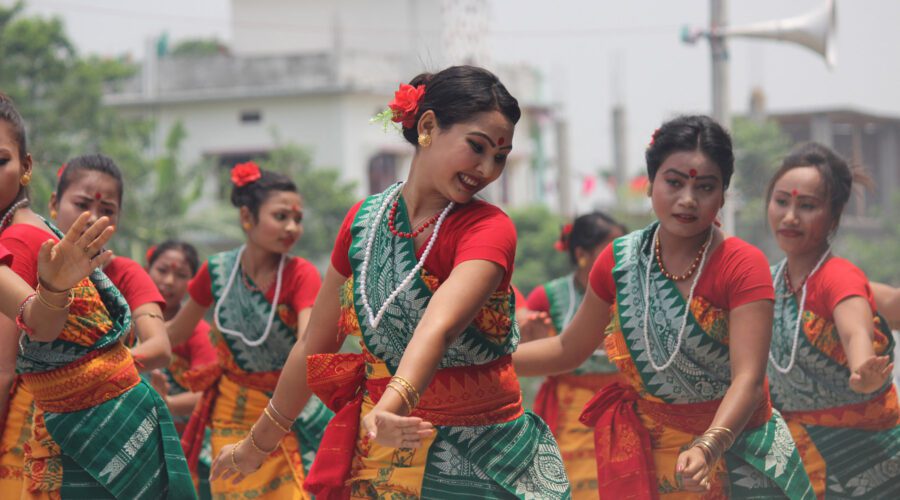Jhapa’s Best-Kept Secrets: 10 Places You Don’t Want to Miss
Jhapa district, located in the southeastern part of Nepal, is well known for its natural beauty and cultural diversity. The district shares its borders with Bihar state of India on the south and West Bengal in the east, Morang district on the west, and Ilam district on the north.
Jhapa is one of the most populated ranking 4th among the districts in Nepal with a total population of 9,94,090 (Nepal Census 2021) with an area of 1606 sq km (620 sqm) and lies between 87°39’ to 88°12’ east longitude and 26°20’ to 26°50’ north latitude. The altitude variation of this district is the lowest at 58 meters (Kechana, the lowest place in Nepal) and 500 meters above sea level.
The district has a diverse population comprising various ethnic groups 110 among 126 ethnic groups throughout Nepal, including endangered ethnic groups like Kishan, Santhals, Meche, Ganesh, and Lepcha. Each of these groups has its unique customs, traditions, and festivals, making Jhapa a melting pot of cultures.
Apart from its cultural significance, Jhapa is also a popular tourist destination, attracting visitors from all over the world. The district is home to several natural attractions, historic temples, natural and man-made attractions, bustling markets and commercial hubs, and scenic tea gardens that cover large strips of the district’s landscape.
Whether you are looking for adventure, relaxation, or cultural immersion, Jhapa has something to offer everyone. In this article, we will explore 10 places to visit in Jhapa that will give you a taste of what this beautiful district has to offer.
1. Satakshidham
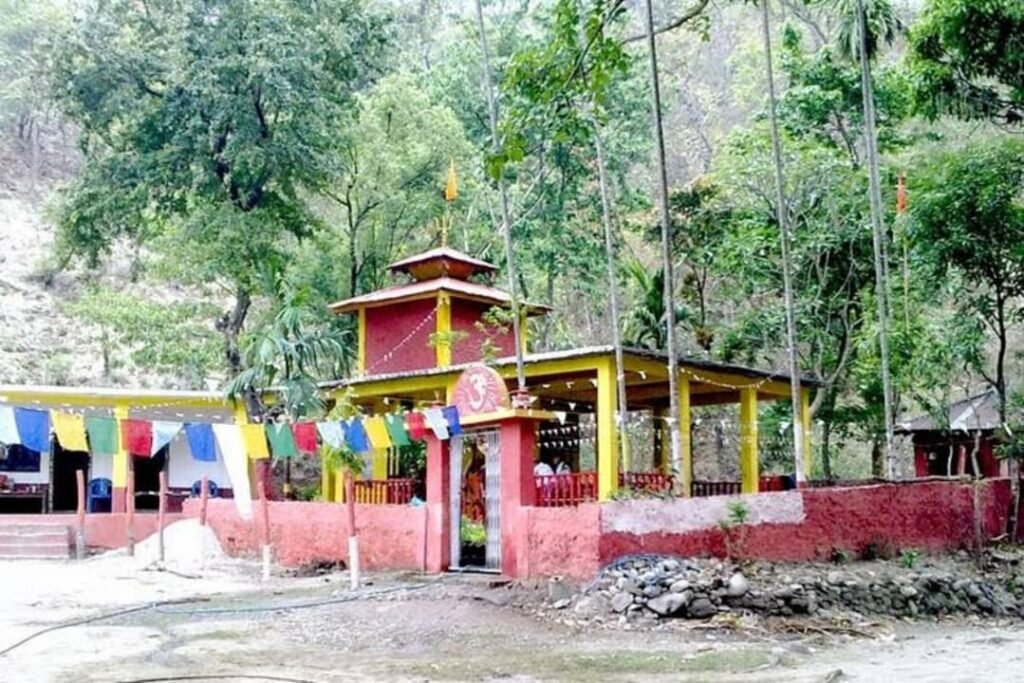
Satakshidham is a famous religious and tourist area often called the Second Janakpurdham of Nepal.
Satakshidham lies in Shiva Satakshi Municipality about 280-300 m above sea level. Linked with Illam at the base of Churiya hill, 4 km north of Jhiljhile Bazaar, this place is beautified by sculptures, sheilas (boulders) in the shape of udders, sulfur-water that flows from 20 m underground of Satasi Khola, idols of the bottom of the hill.
Pilgrims from different parts worship there with a belief in having their wishes fulfilled. Especially, a large number of people observe it on Balachaturdashi to scatter satbij (seven seeds).
Satakshidham is 38 km northwest of Bhadrapur Airport. You can get a public bus from Bhadrapur Airport to Jhiiljhile Bazaar and an auto rickshaw to Satakshidham. Similarly, you can get a public bus from the Kakarvitta border to Jhiljhile to visit Satakshidham.
2. Arjundhara Temple
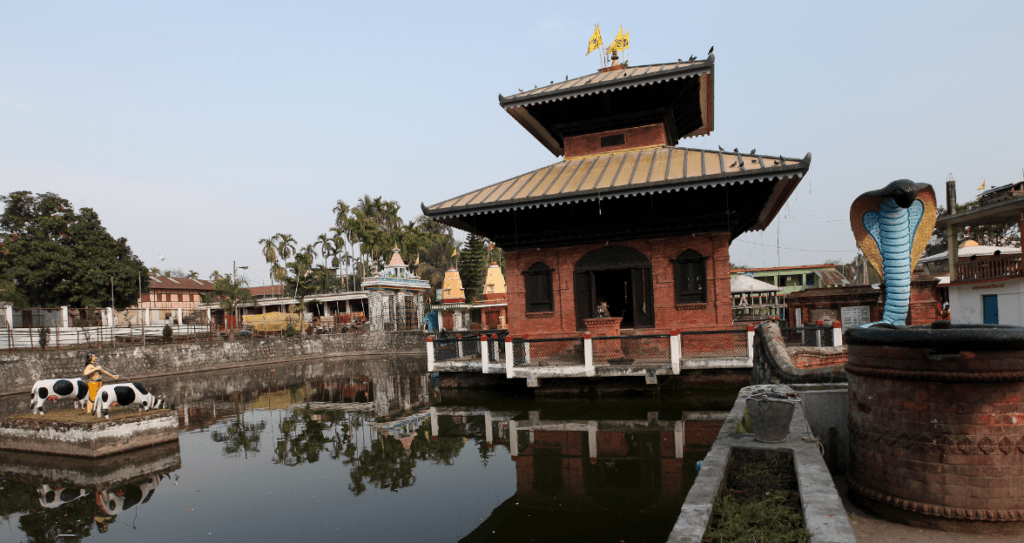
Arjundhara is also known as the second Pashupatinath of Nepal. It is located 5.5 km north of Birtamod and situated west of Sanischare Bazaar lies in Arjundhara Municipality. According to legends, during Mahabharat time, disguised Arjun to quench the thirst of King Birat’s cows (which were returning with him, after the release from the abduction by Kaurabas) had shot an arrow to generate water. Hence, it is called Arjundhara.
Devotees from Jhapa and nearby districts of Nepal, and Darjeeling, Sikkim, and the north-eastern part of India mostly visit during Teej, Shivaratri, and Balachaturdashi. Arjundhara Temple resembles Pashupatinath Temple and is situated in the middle of a pond.
Arjundhara Temple is marked on the postage stamp in 2055 by the Government of Nepal and lies 29 km north of Bhadrapur Airport.
3. Kechana
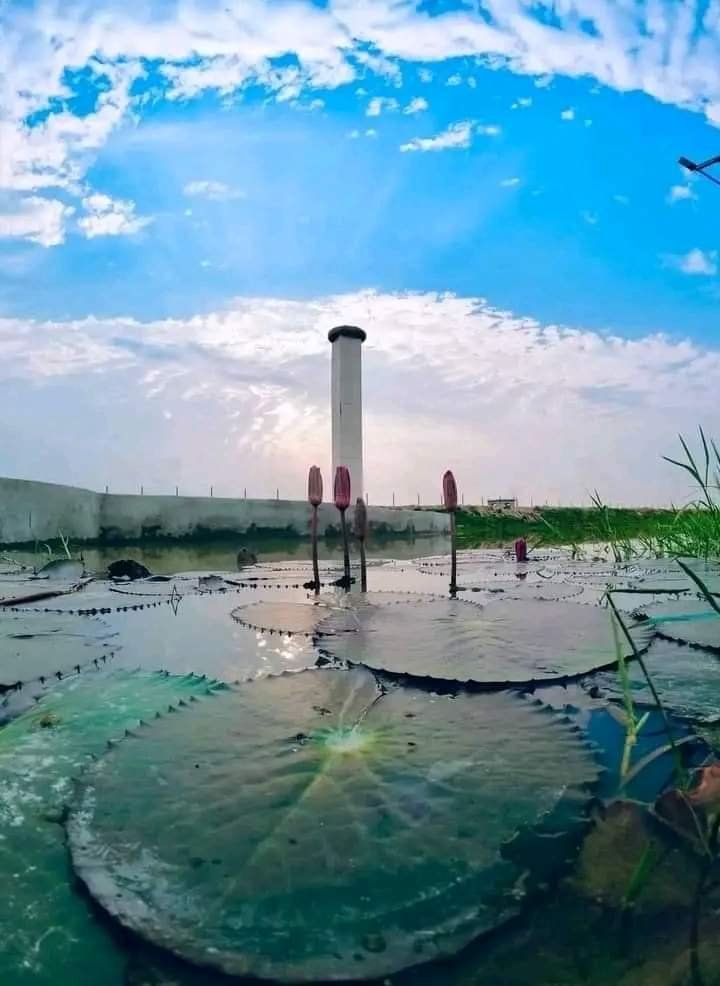
Kechana lies in the southeastern part of the district in Kachankawal Rural Municipality at 58 m above sea level. It is also the lowest part of Nepal; hence, the Rural Municipality is named after it.
Kechana covers an area of 4 bighas of land and bears a great possibility of both internal and external tourist attractions. it is 500 m north of the Nepal-India border and is submerged during monsoon season.
Two historical ponds, which are supposed to be built by King Birtat during Mahavarat time, add to the glory of this place.
Kechana is also included as one of the new tourist destinations among 200 new destinations throughout the country by the Government of Nepal to promote and develop new tourism possibilities.
4. The Martyrs- Memorial Park (Salbari Park)
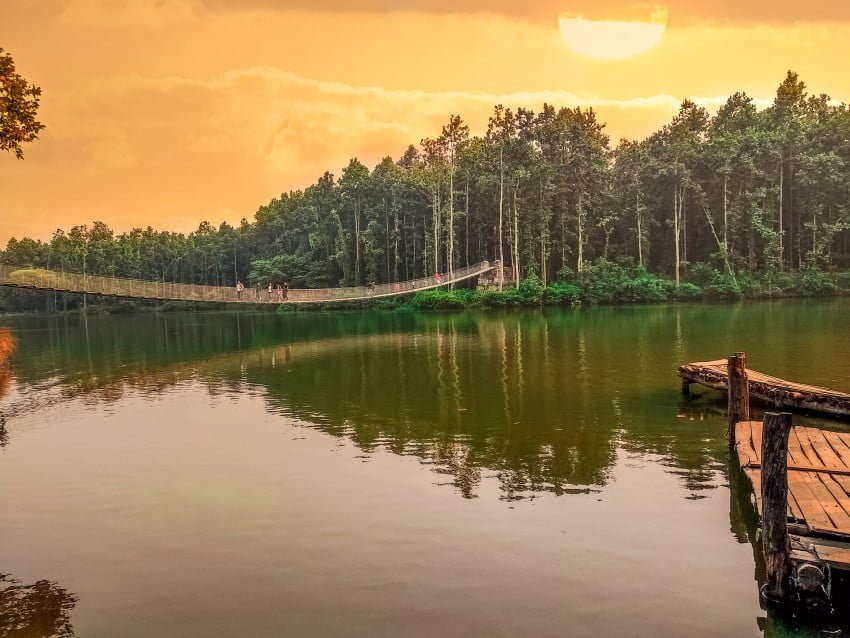
The Martyrs Memorial Park, known as Salbari Park, is in Arjundhara Municipality. It is located in the wetland of the dense Saal Forest, commonly known as Salbari.
Salbari Park is constructed in memory of 5 freedom activists who were shot dead by the Panchayat Government on Falgun 21, 2029 at Sukhani on the charge of attempting to run away while transferring to Illan Jail from the jail of Jhapa.
The wetland has been converted into an immense lake where boating and other water sports have been made available. Besides, it has been a place for the conservation of tortoises, one of the endangered amphibians, which is another prominent attraction of the park. The largest Tortoise Conservation Center in Nepal adds to its glory.
Salbari Park is located 8 km northeast of Birtamod and 5 km east of Sanischare Bazar. The park can be reached from Birtamod, Sanischare, and Charali through an auto rickshaw.
Salbari is also included as one of the new tourist destinations among 200 new destinations in 2021 throughout the country by the Government of Nepal to promote and develop new tourism possibilities.
5. Jamunkhadi Wetland
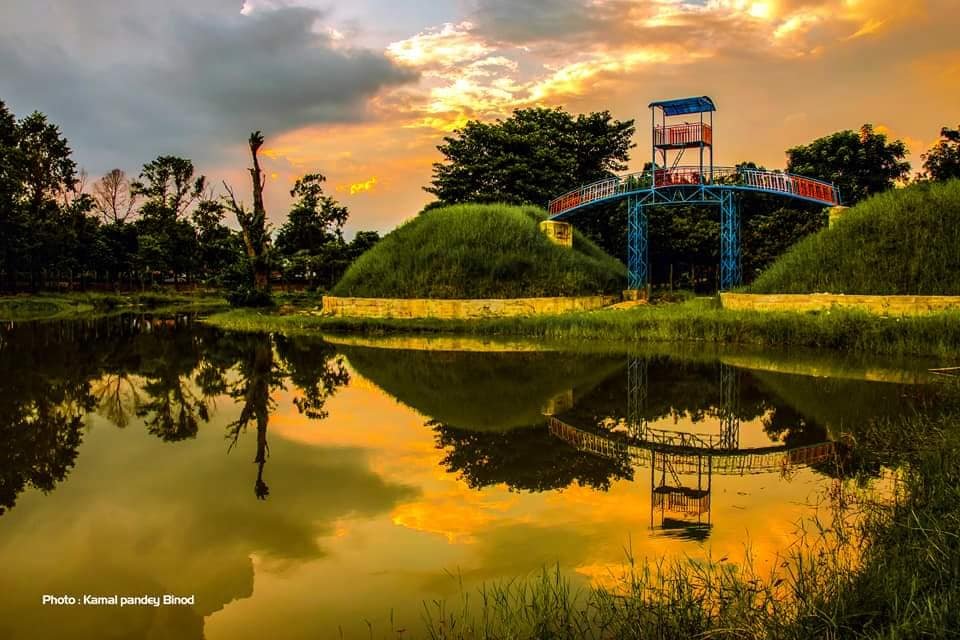
Jamunkhadi Wetland is one of the most famous tourist destinations and picnic spots in the District. It is located within Jamunkhadi Community Forest in Kankai Municipality.
Jamunkhadi has been declared a watershed area for promoting tourism. The area consists of two ponds Ganga and Jamuna Pokhari which carry historical importance in the past. Ganga Pokhari is not in existence due to a lack of preservation and various steps have been taken to preserve Jamuna Pokhari.
Jamuna Pokhari is rectangular covering an area of 4 bighas of land, which is the main center of attraction of the area. Boating and fishery have been carried out to strengthen its economy. World’s rare python is another point of attraction. Deer and stags preserved in the delimited area are its ornaments.
Jamunkhadi Wetland area is famous for Boating, sightseeing, and picnic spot. It is usually crowded throughout the year.
6. Kichakavadh

Kichakavadh is one of the famous religious and historical places of Jhapa District. Kichakavadh is located in Bhadrapur Municipality in the confluence of the Mechi and Deuniya Rivers.
Mythological evidence states that In Mahavarata Bhimsen killed Kichchak (the chief of Army Staff of Matsya Kingdom and brother-in-law of King Birat) at this place. Hence, this place is named Kichakavadh.
Archaeological excavations by the Department of Archeology have uncovered palaces, forts, walls, utensils, and bricks dating back more than 2,000 years in this area, which is spread over an area of 10 bighas. So, Kichakavadh carries high religious and archaeological significance.
Kichakavadh is accessible from Sagarmatha Chowk on Mechi Highway, 10 km south of Chandragadi Airport.
7. Domukha
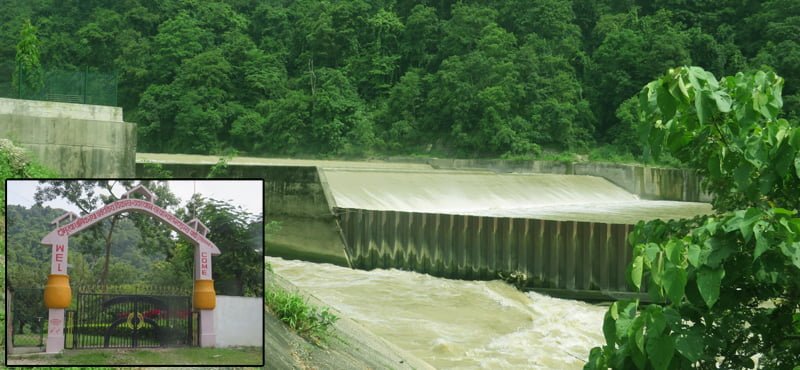
Domukha is one of the most popular tourist destinations of the Jhapa district located in Shivasatakshi Municipality located beside the Kankai River. Before 1990 BS, at the very spot where Kankai mai enters Terai from Churiya Hill, a fallen saal tree was entangled in another saal to give the shape of a bridge. People used to travel using the overpass after which this place called Domukha (a junction of two mouths).
Domukha is rich in scenic natural beauty that houses trees of distinct species, a variety of migratory birds, and a captivating view of the river. The dam constructed here also provides an eye-catching and peaceful view. This irrigation system was built in the year 1971 AD with a loan incentive from the Asian Development Bank. This irrigation facility was regarded as the largest irrigation dam in the region.
Along with this another attraction of Domukha is the suspension bridge that connects it with the Dhanushkoti dham and is visited by thousands of visitors who visit this sacred dham. The Domukha region is also rich in its biodiversity and is habitat to more than 60 specimens of turtles belonging to eight distinct species along with a several species of indigenous fishes.
8. Mini Mountain
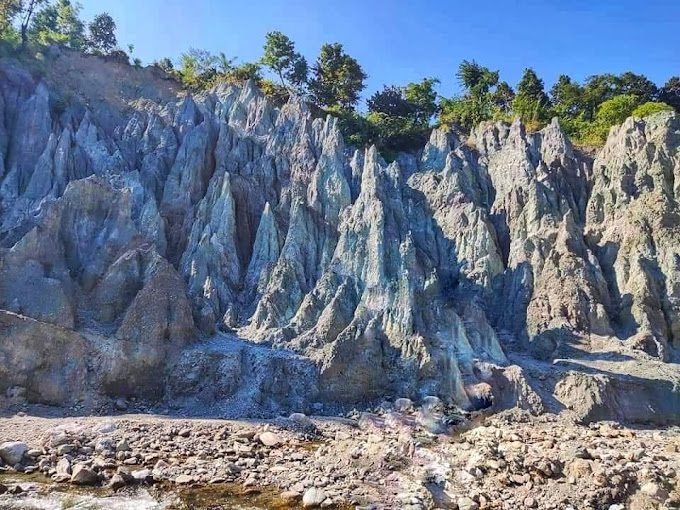
Mini Mountain is one of the emerging Picnic Spots of the Jhapa district located in Mechinagar Municipality. Located some 14 km north of the Mahendra Highway, Mini Mountain is an iconic local attraction in Bahundangi, Jhapa.
The naturally formed structure resembles an actual sedimentary rock mountain, which it gets its name from.
If you want to skip yourself from the crowd and enjoy nature, this place can be worth form. Mini Mountain is good for photography, enjoy time with children at the children’s park and picnic
Mini Mountain can be reached by traveling north from Kakarvitta to Gadagalli Chowk from there move towards the west and in a few turnings you can reach there.
9. Buddhashanti Gauda
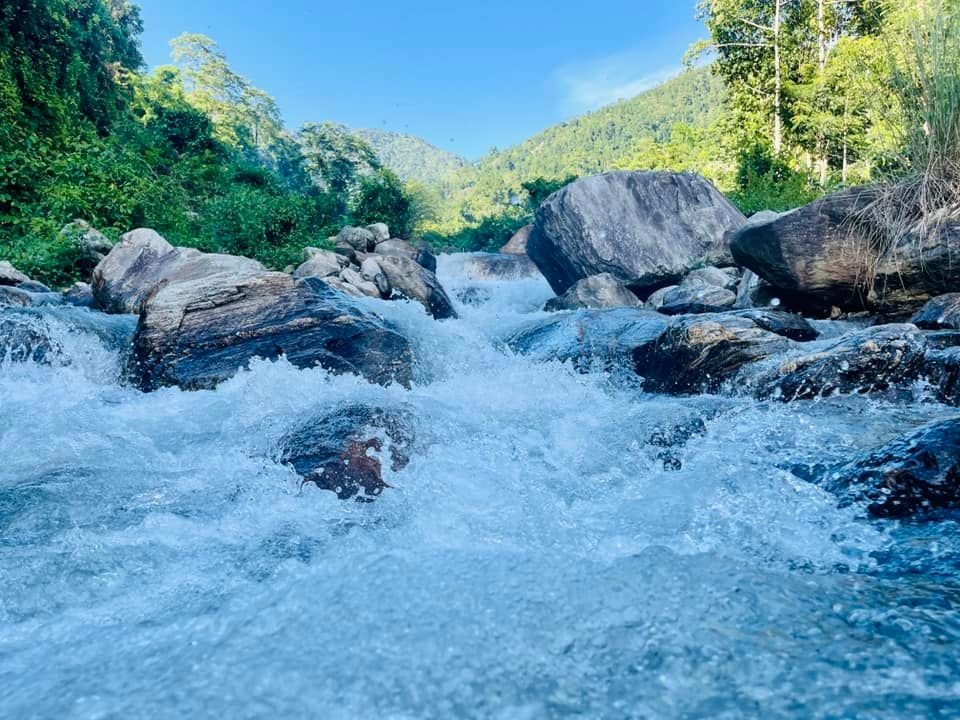
Buddhasahanti Gauda is a scenic and historical place located in Buddhasahanti Rural Municipality 6, situated in the border of Buddhasahanti and Rong Rural Municipality of Illam. The name “Gauda” comes from its historical significance as the entry point to Jhapa district, which was a walking route for the people of Illam to enter the district.
One of the main attractions of Buddhasahanti Gauda is Jorsaghu, a suspension bridge located in Temai and Thotne river, which flows through the area, takes the shape of saghu (a traditional Nepali musical instrument), giving the place its unique name.
The confluence of Temai and Thotne river provides a natural and cool environment, which attracts people from nearby towns such as Birtamod, Budhabare, Dhulabari, Kakarvitta, and Bhadrapur, who come here to beat the heat during summer and enjoy swimming.
In addition to its natural beauty, Buddhasahanti Gauda is also known for its historical houses constructed during the Rana Regime. The area is abundant in greenery, and visitors can enjoy the local culture and ethnic traditions of the people.
To reach Buddhasahanti Gauda, one can travel east through Happin Chowk in the Mechi Highway or travel north from Dhulabari. Overall, Buddhasahanti Gauda is an excellent destination for those who want to immerse themselves in Nepali history, culture, and nature.
10. Palyul Dechen Cheoling Gumba

Palyul Dechen Cheoling Gumba is the largest Buddhist Gumba of Koshi Province Nepal. This newly constructed gumba is located in Buddhashanti Rural Municipality ward no 4 beside Temai River.
Palyul Dechen Cheoling Gumba holds immense potential for cultural and religious tourism in the area. Apart from gumba, the visitor can enjoy the beauty of Burney Tea Estate, Temai River, and the previous settlement area of Temai Bhutanese Refugee Camp. Buddhashanti Rural Municipality is also constructing an Agricultural Market nearby, so the area can hold the potential for agri-tourism.
Palyul Dechen Cheoling Gumba is 3 km east of Mechi Highway and can be traveled through Happin Chowk in Autorikshwa.
Featured Image: Parbat Portel, ekantipur

